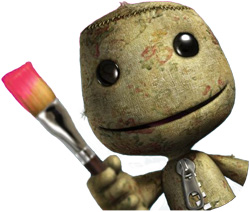 Reportedly we’re going to see smaller 45 nanometer cell processors in 2009 which leads to similar cost savings as we saw in the Xbox 360 hardware. Cost savings appear on the manufacturing side, of course, along with less power consumed by the processor leading to less heat generated by the console.
Reportedly we’re going to see smaller 45 nanometer cell processors in 2009 which leads to similar cost savings as we saw in the Xbox 360 hardware. Cost savings appear on the manufacturing side, of course, along with less power consumed by the processor leading to less heat generated by the console.
The Xbox 360 was able to benefit from chip reduction when for stability and overall heat issues, although the stability is still out for debate at the moment. The concept is fairly simple to understand; heat causes problems in closed systems with few fans and a high degree of complex components. Reduce the heat means reducing the overall need to cool and get air flow into the hot little box.
Console hardware is owned by a broad audience, not all of which understand technology and its ability to boil an egg. Consumers toss consoles and their power supplies in closed cases within their entertainment system and restrict air flow further. Any reduction in heat is a good thing for the console developer.
We’re not guaranteed, however, to see cost savings. Microsoft passed the cost savings to the consumer, recently, but went awhile with their lower-cost “Falcon Chipset” received such a cut. They were, more than likely, trying to recover some of the expenses associated with creating the system and cleaning up the disaster that was the red rings of light.
Will Sony do the same? As the year rolls on into 2009 and these processors start to hit store shelves, what benefit will we have, as the buyer? With the 360, people would scamper out with flashlights and manufacturing codes to find the infamous stable Xbox 360… PlayStation gamers haven’t had such a need for heat reduction; they’ve got a need for cost reduction.
Sony’s taken a lot of heat for their high priced Trojan blu-ray appliance along with substantial costs for winning the format war. They have a 10-year plan for the PlayStation 3 and price reductions may definitely accelerate their plan of dominance before Microsoft tosses out some next-generation news.
The huge boost in 360 sales prior to their price cut was fairly significant in the market, presumably Sony would get a similar pop in retail. Gamers want cheap PlayStation 3‘s now, not in 2009, but the idea of a price reduction is always a nice incentive for future buyers to consider.
Of course, Sony would never talk to this topic as the threat of consumers holding out for a price drop would be way too high to take such a risk.
Anyone forsee a price drop for PS3? Would that intice you to buy?
(Thanks, Engadget)

 We’re all used to Sony falling on their face at E3 in the last few years, but, this year, things were different. They’re information was delivered well, they had a great presentation medium using Little Big Planet‘s game engine as a presentation platform over the standard PowerPoint slides and everything went smoothly.
We’re all used to Sony falling on their face at E3 in the last few years, but, this year, things were different. They’re information was delivered well, they had a great presentation medium using Little Big Planet‘s game engine as a presentation platform over the standard PowerPoint slides and everything went smoothly.
 Bad economic times mingled with company acquisition spells disaster for many game titles but the story ends well, we hope, for Ghostbusters. The game was slated for a Holloween release, last year, but was given the boot by
Bad economic times mingled with company acquisition spells disaster for many game titles but the story ends well, we hope, for Ghostbusters. The game was slated for a Holloween release, last year, but was given the boot by
This issue is that the PS3 has a Blu-Ray drive in the system, and that won’t change.
This issue is that the PS3 has a Blu-Ray drive in the system, and that won’t change.